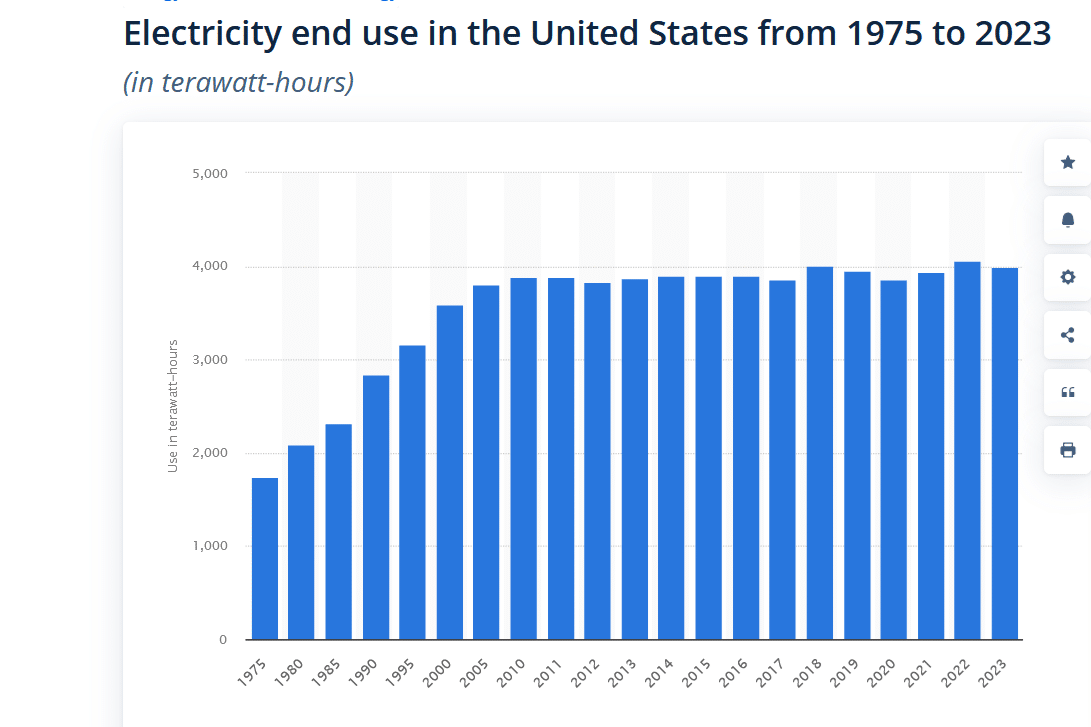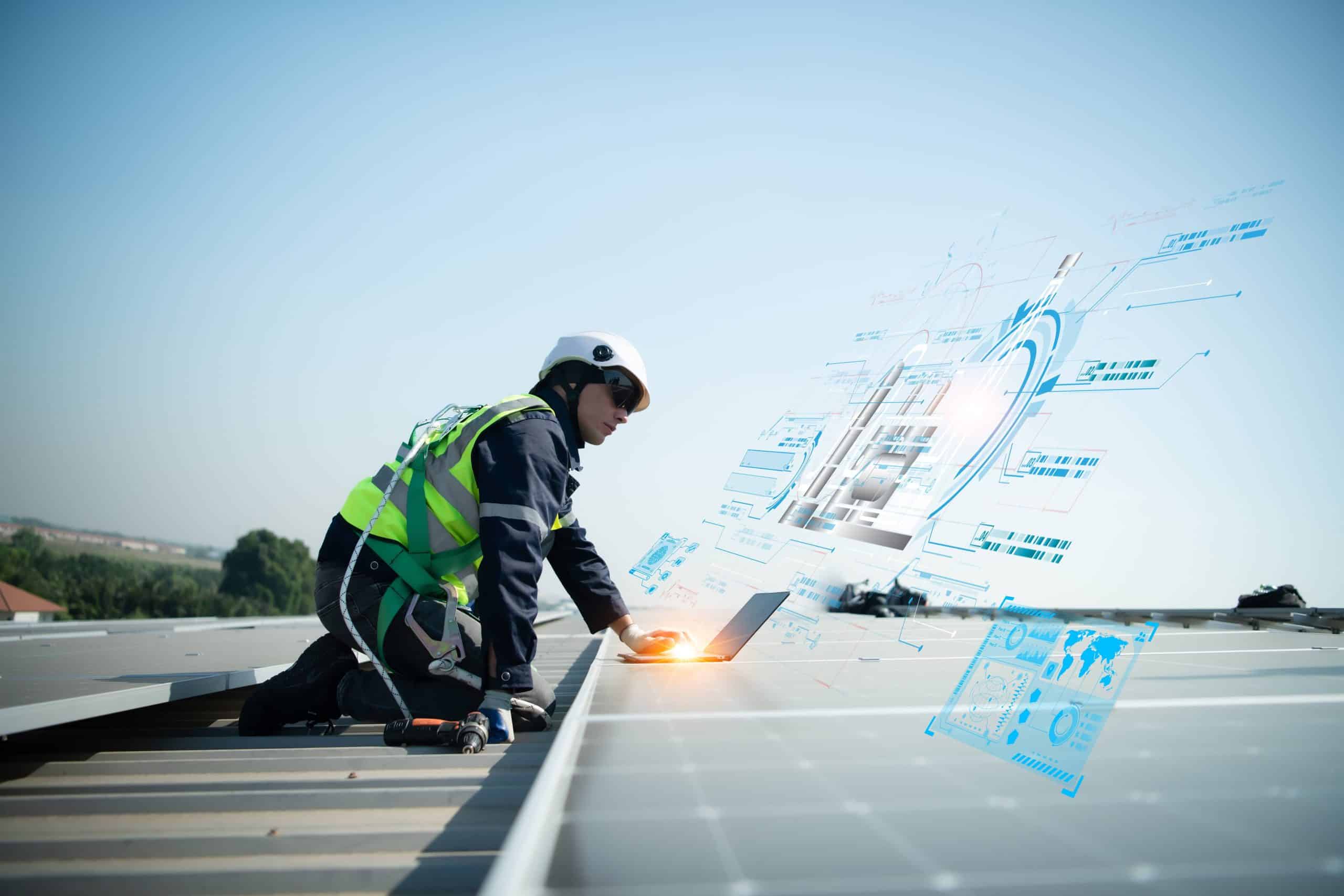A record number of S&P 500 companies are talking about artificial intelligence (AI) in their earnings calls which is reflective of the literal euphoria towards the technology. Companies across the spectrum are trying to tell markets about their AI initiatives and how they plan to harness the technology to increase revenues and/or cut costs.
But hidden behind the AI euphoria – which at least a section of the market believes is now at bubble levels – is the environmental impact of the technology. Driven by AI, power consumption of data centers is expected to explode which will only increase the technology’s carbon footprint. Also, it would lead to higher water demand which is among the most precious natural resources globally. Here’s what different reports say about the issue and how companies are trying to address it.
How Is AI Fueling Electricity Demand
While Nvidia’s Data Center business is posting stellar growth and the segment’s revenues rose over 400% to $22.6 billion in the most recent quarter, the electricity demand from these data centers has also skyrocketed and is expected to rise even further.
In its report, Rystad Energy estimates that US data center power demand which is currently at 130 terawatt hours (TWh) would more than double to 300 TWh by 2030. It also pointed to the increase in demand from the transportation sector amid the ongoing transition to electric vehicles (EVs).
According to Rystad Energy analyst Surya Hendry, “This growth is a race against time to expand power generation without overwhelming electricity systems to the point of stress.”
Goldman Sachs has an even bullish forecast and estimates that global data center power demand will rise 160% by 2030. The firm, which estimates that a ChatGPT query on average needs nearly 10 times as much electricity than to process a Google search, forecasts that by the end of this decade, power centers will account for between 3-4% of global electricity demand. Currently, they account for only between 1-2% of the global electricity demand.

US Electricity Demand Has Been Stable Over the Last Decade
Notably, despite the rise in population and an ever-growing installed base of power-guzzling devices, US power demand has been largely stable over the last decade. The anomaly is largely due to the higher efficiency of devices as well as innovations like LED lights which consume far less power than their predecessors.
The expected increase in power consumption would require massive investments across the ecosystem – from electricity generation to transmission, and distribution. Goldman Sachs estimates that the US would need $50 billion just to meet the electricity generation demand while Europe would need over $1 trillion to prepare its grid for AI.
How Are Companies Trying to Cut Down Emissions?
While the electricity demand from data centers is set to skyrocket, there are several steps that companies can (and are taking) to cut down their carbon footprint. The most prominent of these is by increasing the percentage of renewable energy in their electricity mix.
For instance, in its ESG report earlier this year, IBM said that 74% of the electricity that its data centers consumed came from renewables which was eight percentage points higher than what it was in 2022.
However, AI forays have meant that the carbon footprint of Big Tech companies has expanded. For instance, Microsoft’s carbon emissions have increased 30% since 2020 and the company might miss its target of becoming carbon-negative by the end of this decade.
The company has said that it would require some suppliers to use 100 percent carbon-free electricity by the end of this decade to help meet its climate goals.
In an interview with the Wall Street Journal Microsoft Chief Sustainability Officer Melanie Nakagawa raised an important question; “While things might need more energy consumption, does that necessarily relate to an emissions increase, or can you do that in a carbon-free way?”
*GATES SAYS AI WILL PAY FOR ITSELF WHEN IT COMES TO CLIMATE
let's just ignore the emissions caused by data center energy consumption… and Bill Gates' private jet.
— zerohedge (@zerohedge) June 26, 2024
Microsoft Would Even Consider Nuclear Energy to Cut Emissions
In order to cut emissions, Microsoft is even open to the idea of small nuclear reactors. Notably, along with sourcing electricity from renewable sources, companies can also invest in on-site electricity generation, especially solar and wind.
As AI invariably leads to an increase in electricity demand, companies might need to take additional steps to meet their own sustainability goals. For instance, Research from the University of Buffalo said, “data center managers can reduce energy consumption 10-30% by consolidating jobs to as few servers as possible when workloads are high, and evenly distributing the workload across all servers when loads are low.”
Meanwhile, while the workaround for carbon emissions looks somewhat straightforward, companies would need to think out of the box when it comes to water. Several countries globally are battling severe water shortages and AI is further fueling the water demand which could only amplify the crisis
How Is AI Fueling the Demand for Water?
While AI’s electricity demand gets quite a bit of attention, its water usage hasn’t got as much coverage. Water is used across the AI ecosystem including in cooling data centers and during electricity production. Notably, many rare metals require a lot of water during the production process. Also, copper whose demand is expected to spike amid the AI pivot has a water-intensive production process.
Research has shown that ChatGPT consumes 500 milliliters of water for every five to 50 prompts whereas a single Google search requires half a milliliter of water in energy.
According to Cornell University, “the global AI demand may be accountable for 4.2 – 6.6 billion cubic meters of water withdrawal in 2027, which is more than the total annual water withdrawal of 4 – 6 Denmark or half of the United Kingdom.”
There are already concerns over AI’s water usage and Google’s data center in The Dalles, Oregon has faced scrutiny as it is in a water-scarce region.
How Can AI Companies Reduce Their Water Footprint?
AI companies might need to look at innovative ways to lower their water usage. For instance, in its 2024 sustainability report, Microsoft said, it is working on “Reducing water use and replenishing more water than we consume in our datacenter operations.”
The report added that Microsoft is working on a water replenishment project “which leverages AI-enabled acoustic analysis to reduce water loss from leakage.”
Taiwan which accounts for the bulk of advanced chip production and is home to TSMC which makes chips for Nvidia has used techniques like cloud seeding and water desalination to replenish water.
All said, while in many ways AI would help address water shortage and climate change through better usage of technology, AI companies have to lot on their table as they strive to meet their sustainability targets which are now getting increasingly difficult.
